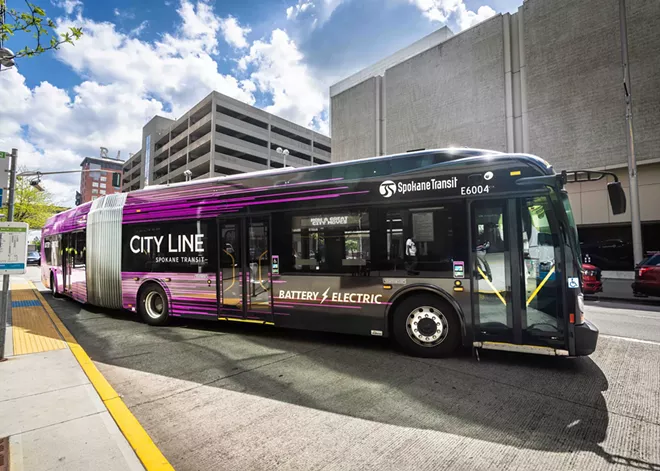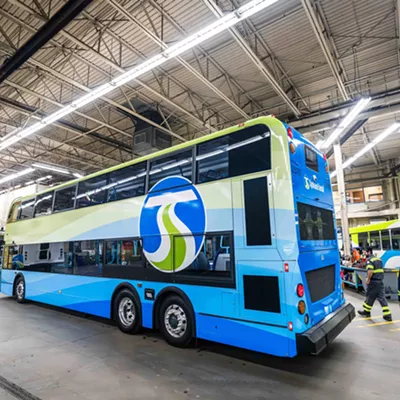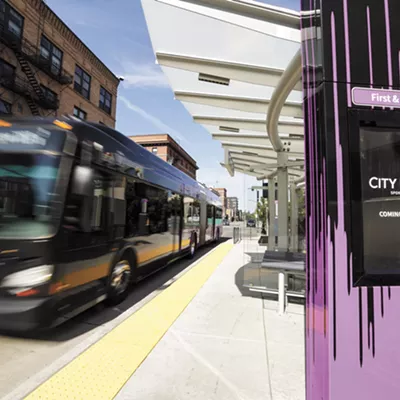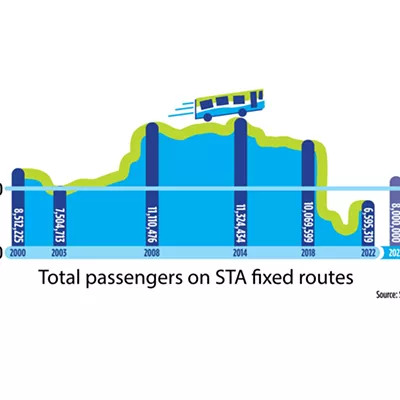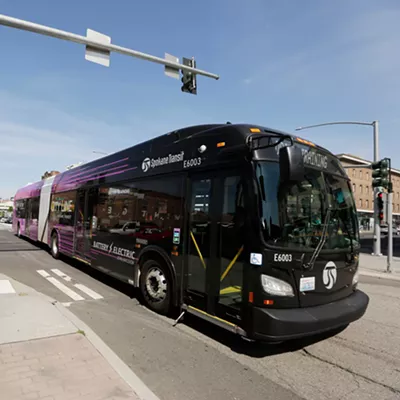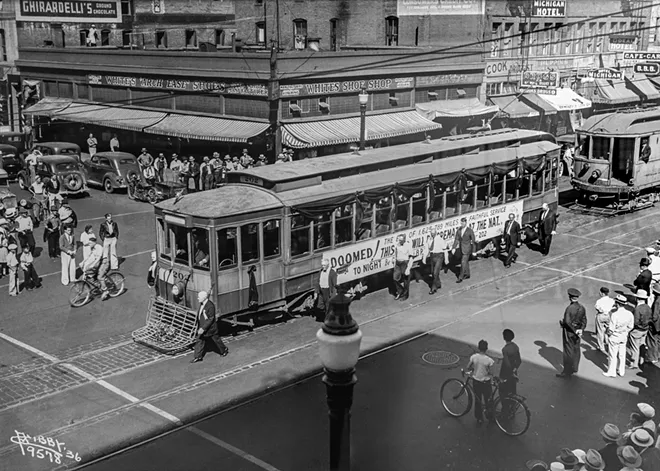
History was made last month on the campus of Gonzaga University. Before numerous public officials — including Washington Gov. Jay Inslee and Veronica Vanterpool, the deputy administrator for the Federal Transit Administration — service on Spokane Transit Authority's City Line began.
It's the region's first Bus Rapid Transit, serving Browne's Addition, downtown, the University District, including Gonzaga University, and Mission Avenue to Spokane Community College.
But it's also the nation's first all-electric, five-door vehicle (built by New Flyer of America) that looks and functions as a light-rail or streetcar vehicle, but at a dramatically lower price.
So how did this happen, and why Spokane? To answer those questions, let's look back at the 12-year evolution of the City Line project.
Spokane has a long history of supporting public transportation. At one time, the city was populated with streetcars traveling the entire span of the city on steel rail lines embedded in or adjacent to city streets. The historic system served over 25 million riders per year. Over time, the advent of the automobile and rubber-tired buses consumed the roadway, and eventually, the rail lines were removed, and the streetcars relegated to history.
As the use of autos increased, so did congestion on our roads and the need for public transportation. The network structure of Spokane's transit system was developed as a "hub-and-spoke" system, with downtown being the center of the hub. Getting both employees and shoppers downtown was a priority, and avoiding the need for large parking lots was desired.
Around the turn of this century, to comply with the state's Growth Management Act, downtown property owners and other stakeholders developed a 20-year master plan for downtown's future growth. The plan envisioned a trolley-type service to replicate the success of the past. The goal was a visually modern new service that would be an experience for visitors, while also providing access to the downtown core.
The initial desire was an electric streetcar with steel rails in the roadway. The project vision included easy boarding, frequent service and permanent stations with passenger amenities like real-time information. But this concept proved to be far too expensive. The vision was modified to explore a system with overhead power-cables (or catenary lines) as the vehicle's propulsion system. This approach was abandoned because downtown's aesthetic would be materially and negatively altered.
The vision then evolved into a more affordable rubber-tired vehicle that would look and function like the coveted light-rail vehicle. This would address many of the goals and concerns, however, there was a fundamental problem: There was no U.S. manufacturer that made such a vehicle. To be eligible for FTA grant funding to help pay for the system, the vehicle had to be made in America.
To satisfy the community's goal of a rubber-tired, light-rail looking vehicle, Spokane Transit Authority CEO E. Susan Meyer began the search for a manufacturer willing to build this new vision for the American public transportation industry. After an exhaustive search, NFI Group Inc.'s subsidiary company, New Flyer, agreed to pursue the forward-thinking goal. Developing such a vehicle required innovative thinking, out-of-the-box creativity and time to pull it all together. All that advocacy and energy has led to the construction of the first City Line vehicle that achieved the goals of affordability and a modern experience.
The visioning, goal setting and hard work all became reality when the vehicle debuted to a cheering crowd on that beautiful summer day on the Gonzaga campus. According to New Flyer, the vehicle is so popular, other agencies around the country are now placing orders for it. No matter how many do so, there will only be one first — Spokane's City Line.
A portion of the funding for this new service was included in the voter-approved 2016 ballot measure to fund the STA Moving Forward 10-year strategic plan. At first, the locally developed project budget was $72 million. As a condition of receiving a $53.4 million Small Starts Grant from the FTA to help pay for the project's capital costs, STA had to increase the budget estimate to $92 million, providing for a $20 million contingency for potential cost overruns. This protective adjustment was driven by FTA's experience with many other transit projects across the country significantly exceeding their budgets.
That contingency allowed STA to provide for both enhancements to the project, and to cover additional costs incurred due to supply chain and inflation complications created by the COVID pandemic. Even with those challenging cost impacts, STA has delivered the project well under the $92 million budget — one of the only transit agencies in the country to do so.
The Spokane region has a record of leading the country in so many areas, and now the high bar set by STA and the implementation of the City Line can add to that list of accomplishments. ♦
Al French has been on the Spokane County Board of Commissioners since 2011. Prior to that, he was a two-term Spokane City Council member. He has served on the Spokane Transit Authority board for 21 years, and he won the American Public Transportation Association's Outstanding Board Member of the Year Award in 2008.

